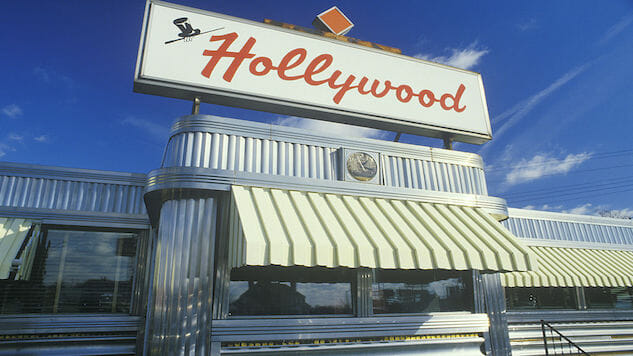The History of the American Diner
Photo by Visions of America/UIG/Getty
The American diner is a home away from home for many Americans. Often open 24 hours a day, the diner is a place to socialize, eat when working a late shift or enjoy a meal any time of day. It is an American icon that has appeared in all facets of popular culture.
The concept of the diner began when Water Scott, a Rhode Island entrepreneur, repurposed a horse-pulled wagon into a car that served sandwiches, coffee, pies, and eggs to people late at night. He quit his job as a printer to sell food from the wagon. Soon other companies followed to produce lunch wagons or early diners.
Worcester, Massachusetts’ T.H. Buckley found that designing and manufacturing lunch cars was more profitable than running one. He is known as the inventor of the diner and owner of the Worcester Lunch Car Company. These early dining cars had large wheels, overhangs, murals, lettering and frosted glass, while the interior contained basic stoves and an ice box. In the 1900s there were three companies manufactured lunch cars — Worcester Lunch Car, Tierney and O’Mahony.
Later diners had smaller wheels, larger counters, tile and bathrooms and often were permanent establishments, catering to the lunch and night crowd. In 1913 Jerry Mahoney established the first stationary diner. He owned companies In New Jersey, Massachusetts and New York that shipped diners all over the country — in the 1950s, he owned 6,000 diners nationwide.
After World War I broke out, diners shifted to catered to women, adding flowers boxes and wallpaper and advertising their food as home cooked meals. Diners in the 1930s had a streamlined design, featuring bullet-shaped exteriors and chrome interiors. The streamlined modern design of the diner first appeared in the 1930s in an effort to change their image. The streamlined futuristic designs reflected the modern era. During the Depression many diners stayed in business due to their low cost menus. The demand for diners increased after World War II when many service men and women returned home. There were over a dozen diner manufacturers.
-

-

-

-

-

-

-

-

-

-

-

-

-

-

-

-

-

-

-

-

-

-

-

-

-

-

-

-

-

-

-

-

-

-

-

-

-

-

-

-








































